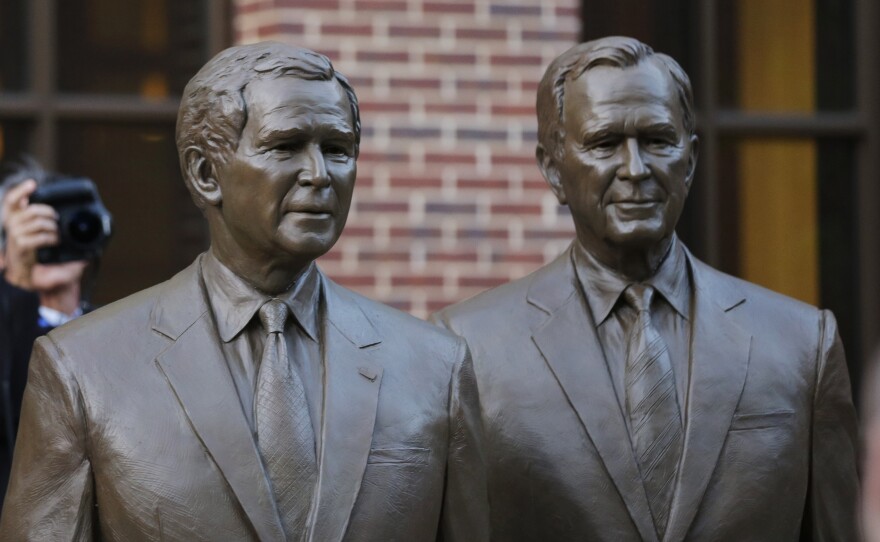The Situation Room is one of the most mysterious and important rooms in the White House. It's where Lyndon Johnson made decisions about the Vietnam War; where Bill Clinton learned about the bombing of the USS Cole; and where George W. Bush gave the order to begin the Iraq War.
Now, that famous room has been rebuilt in Dallas, inside the new George W. Bush Presidential Library and Museum.
Trying to get kids interested in history is nothing new for presidential libraries, and neither is replicating rooms in the White House. The Truman, Johnson, Ford, Carter, Reagan and Clinton libraries all have full-size models of the Oval Office, but none has the Situation Room.
The Situation Room has the standard trappings of an office conference room: mahogany wood paneling, navy blue carpet and a large oval table that fits about a dozen people. That's how it looked when Bush took office. When he decided to renovate in 2006, Bush held on to the original room and turned it over to Alan Lowe, the director of the Bush Presidential Library and Museum.
"When I came here four years ago, in our temporary storage area, we had these huge crates literally full of two rooms," Lowe says. "So we've reconstructed the conference room here and the other room we received, called the Command Room, is now at the Reagan library, where they've reconstructed it."
This room, where Condoleezza Rice and Dick Cheney spent countless hours, will now be a space for school kids to learn about decisions usually made behind closed doors. Lowe says they'll use technology to connect the room here in Dallas with Reagan's library in California to reenact real-world events.
"The first two scenarios we're looking at are indeed Sept. 11 and the attempted assassination of Ronald Reagan," he says. "So we would have the students here and there playing different roles."
There will be a large flat-screen TV on one of the walls and students will have handheld tablet devices to provide instant updates — gadgets Bush never had, but technology that's found throughout the museum.
In another room, The Decision Points Theater, visitors can deliberate on the crises that defined Bush's presidency. Picture Who Wants To Be A Millionaire, except instead of Regis Philbin, your host is one of Bush's former chiefs of staff.
You have four minutes to answer prompts to address a situation, and can use dozens of touch screens to consult advisers. The scenarios range from the Iraq war to Hurricane Katrina.
Whether you're in this theater or the Situation Room, the message is the same: don't just accept what happened. Put yourself there, and make a decision.
Copyright 2013 KERA











